The Rules of Heavy and Light Letters In Tajweed – Tafkheem And Tarqeeq
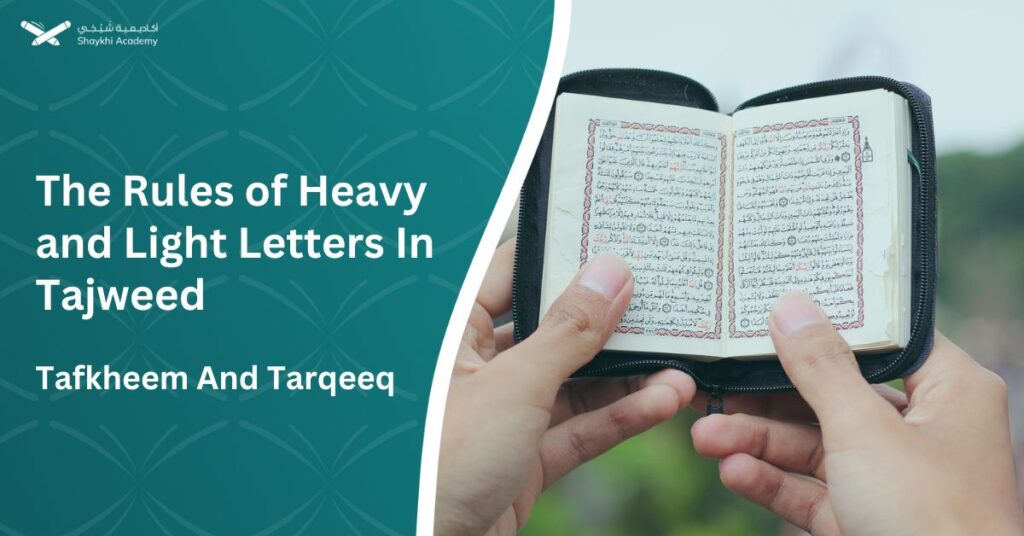
letters are classified based on their phonetic characteristics into two main types: heavy (Tafkheem) and light (Tarqeeq). Tafkheem letters are pronounced with a fuller, stronger sound, while Tarqeeq letters are articulated with a thinner, softer tone. Most Arabic letters are naturally light, but seven specific letters always carry a heavy quality. Some letters, like the […]
What Is Alphabet In Tajweed? Full Guide To Tajweed Letters

The Arabic language is the language of the Quran, and thus the words of the Quran are composed of Arabic alphabet letters. Tajweed scholars differentiate between the Arabic alphabet in the Arabic language and the Arabic alphabet in terms of Tajweed. As is known, there are 28 letters in the Arabic alphabet, but in the […]
Top 8 Advanced Tajweed Rules In Detail with Examples
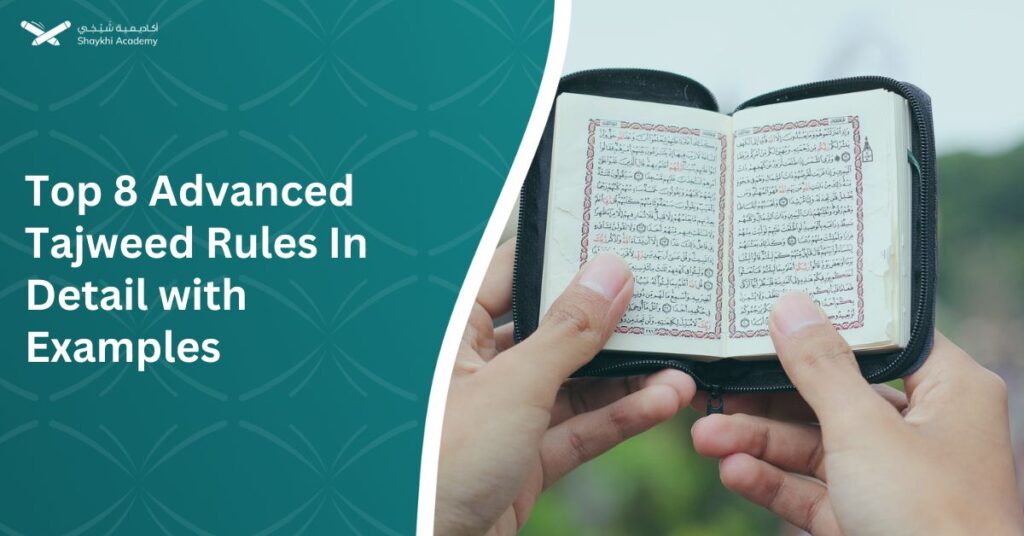
Advanced Tajweed rules elevate Quranic recitation with refined techniques for perfect pronunciation, precise merging of letters, and nuanced emphasis. These rules ensure the recitation maintains the Quran’s linguistic beauty and divine eloquence. Each rule of Tajweed has general, simple guidelines that are easy to understand and apply. However, for the same rule, there can also […]
What is Tajweed? Meaning, Types, History, And More!

Tajweed is a science of the Quran that specializes in improving recitation, correcting it, pronouncing the letters correctly, and reciting the verses as our Prophet Muhammad (peace be upon him) used to recite them. Allah Almighty revealed the Quran to His Prophet and commanded His servants to preserve, recite, understand, and act upon it. Many […]
Madd Al-Muttasil In Tajweed With Examples
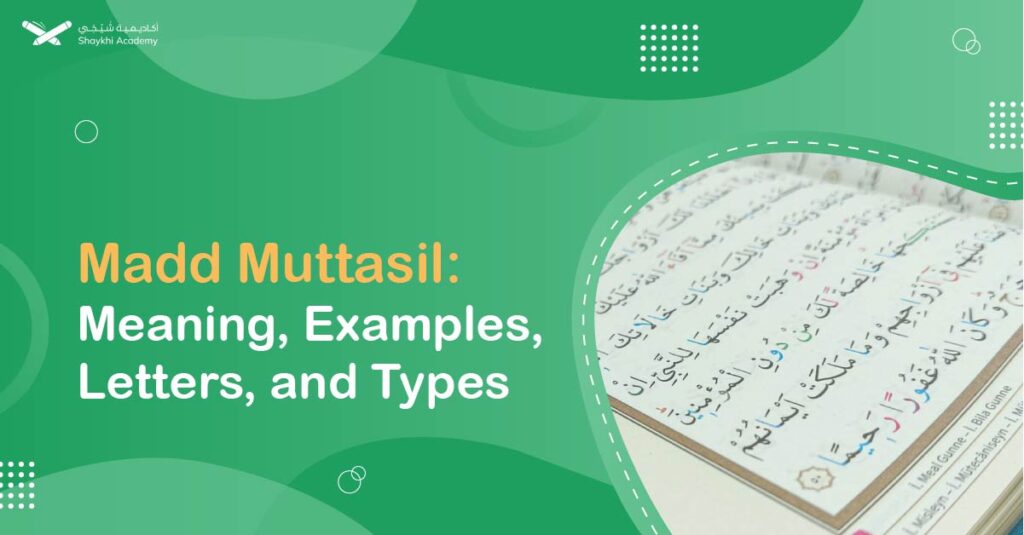
Madd Al-Muttasil in Tajweed dictates elongating letters like Alif, Waw, or Ya when followed by a hamzah within the same word, ensuring precise Quranic recitation. This rule mandates extending these letters by four or five counts, as exemplified by words such as “السَّماءَ” and “الشِّتَاءِ” in the Quran, maintaining the eloquence and correctness of reciting […]
Madd Iwad in Tajweed: With Its Types, Letters And Examples
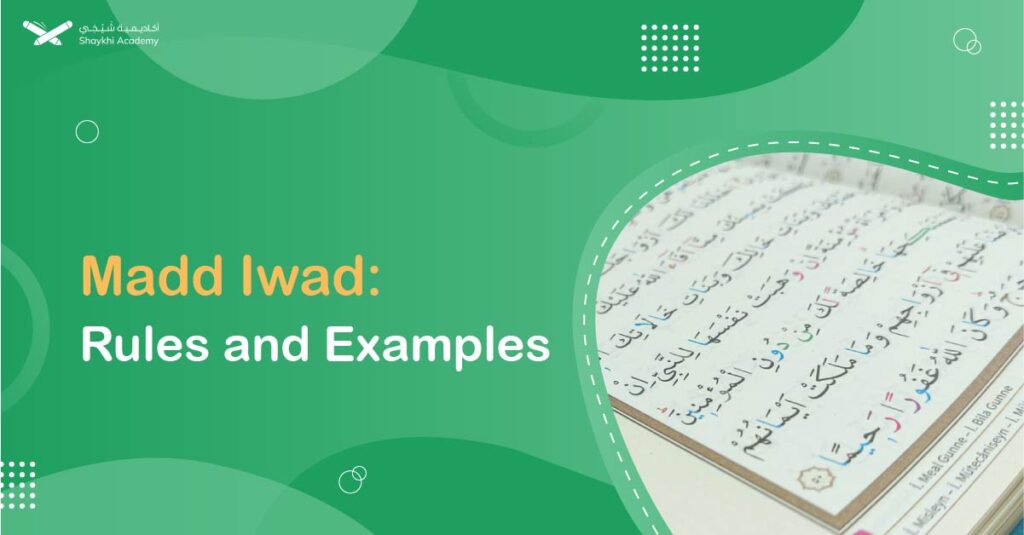
In the art of Quranic recitation (Tajweed), the rules of elongation (Madd) are vital for maintaining the rhythm and beauty of the recitation. One of the significant types of Madd is Madd Iwad or Madd al-‘Iwadh. This article will explore Madd al-‘Iwadh in detail, including its definition, rules, exceptions, and various types with examples from […]
Madd Rules In Tajweed: Types Of Madd, Letters, With Chart And Examples
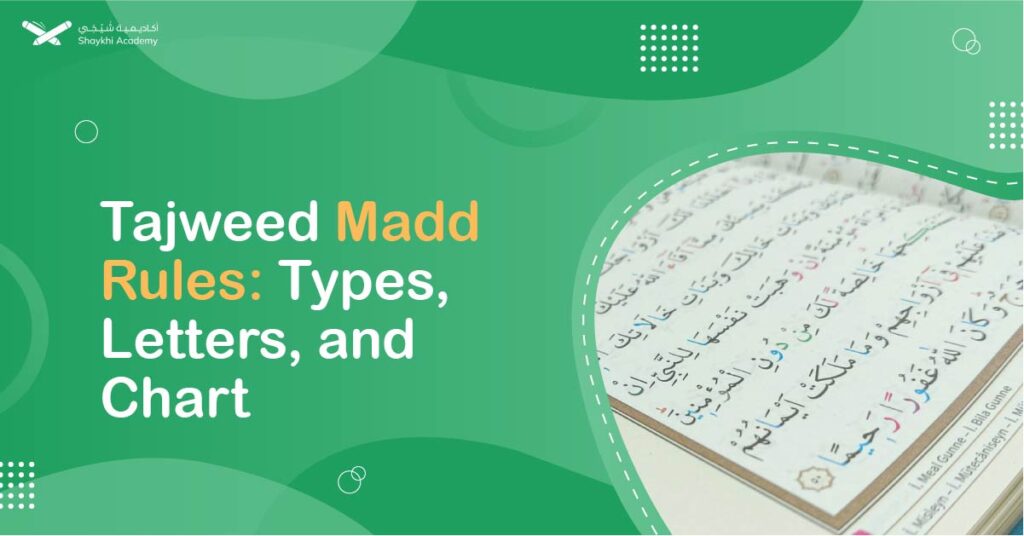
Madd, or elongation, in Tajweed, refers to extending the sound of a vowel or certain soft consonants. There are two main types: Original Madd (Madd Asli) and Secondary Madd (Madd Far’i). Original Madd occurs naturally and lasts for two beats (harakat). It includes Permanent Natural Madd, consistent in both continuous and paused recitation, and Madd […]
Difference Between Ikhfaa, Idgham, Izhar, And Iqlab With Examples
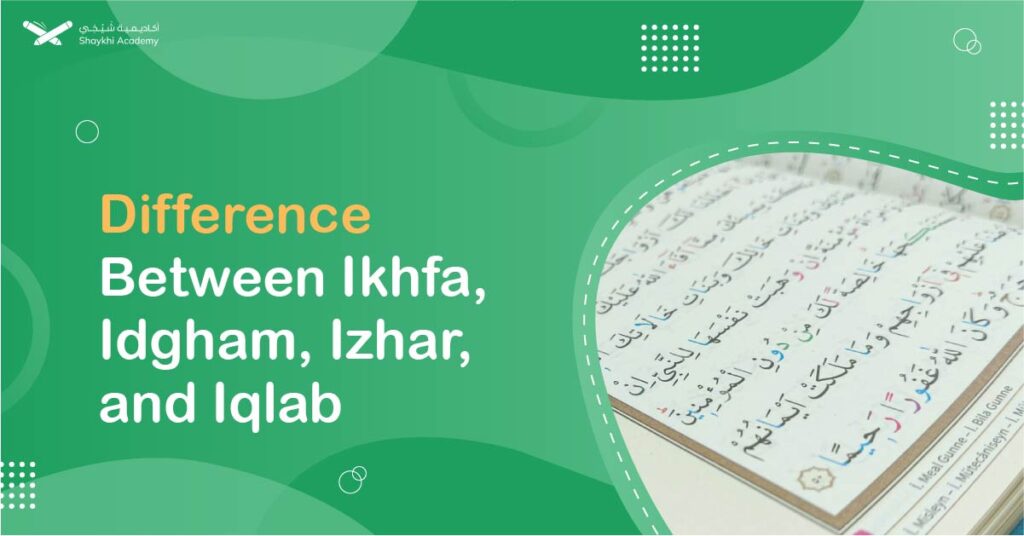
Difference Between Ikhfaa, Idgham, Izhar, And Iqlab: The main difference is that Ikhfaa partially conceals with nasalization, Idgham merges letters fully with nasalization, Izhar pronounces clearly without nasalization, and Iqlab changes noon saakinah or tanween to meem with nasalization. After learning the rules of Noon and Meem Sakinah, which are Idgham, Izhar, Ikhfa, and Iqlab, […]
Idgham Kamel in Tajweed With Types Examples And Pronunciation (Mutaqaribain, Mutmatsilain, And Mutajanisain)
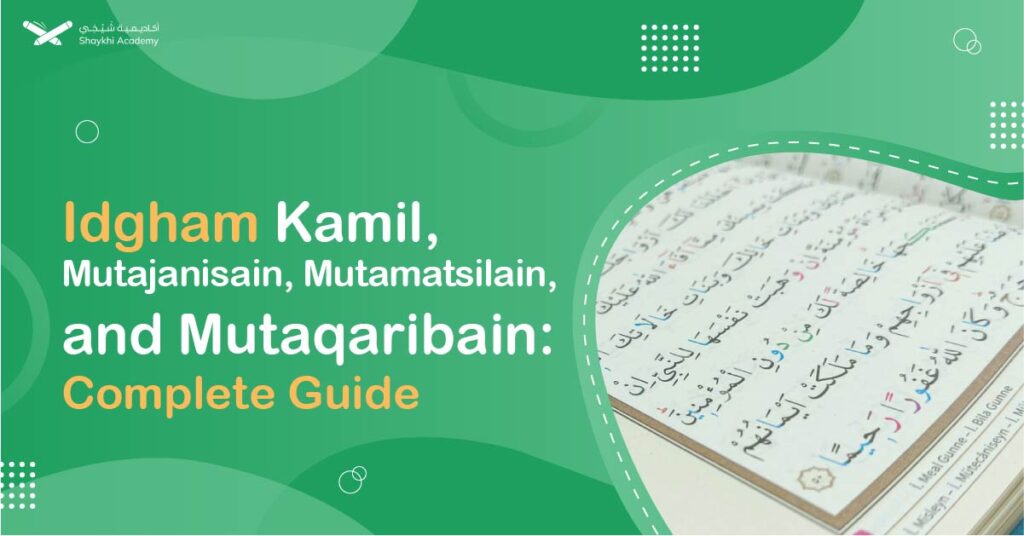
Idgham Kamel is one of the several types of Idgham, it involves the complete merging of a preceding letter with sukoon into the following letter, eliminating the original letter’s characteristics and resulting in a single intensified letter, as seen with letters like noon, meem, ra, and lam in the Quran. Examples include the merging of […]
Idgham Naqis in Tajweed With Examples And Pronunciation
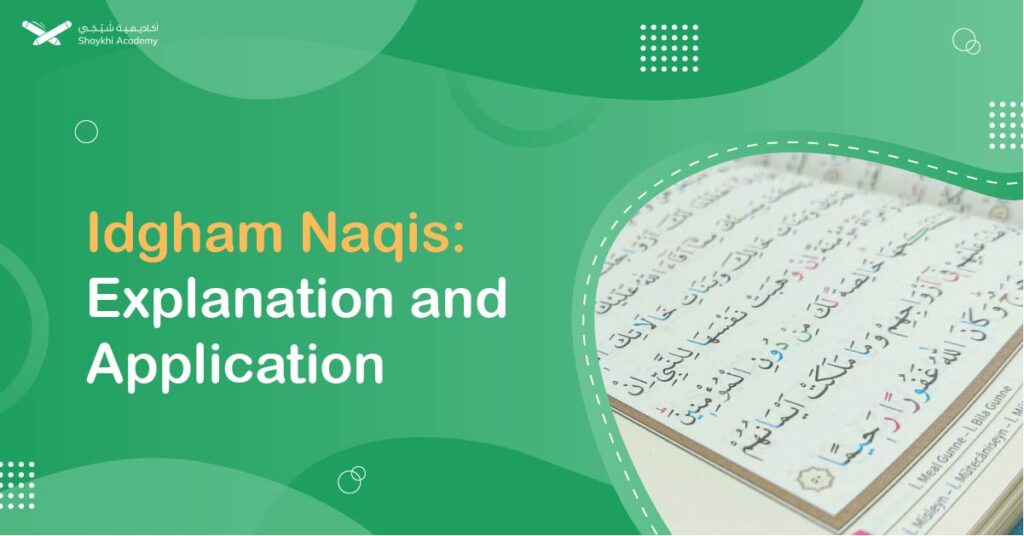
Idgham Naqis, a subcategory of Idgham, signifies partial merging of letters where Noon Saakinah (نْ) or Tanween (ً ٍ ٌ) is followed by “ي” (ya) or “و” (waw), producing a nasal sound (Ghunnah). Unlike Idgham Kamal, where the first letter is completely merged into the second, Idgham Naqis involves a partial merging, retaining some characteristics […]
Idgham With Ghunnah and Idgham Without Ghunnah With Examples!
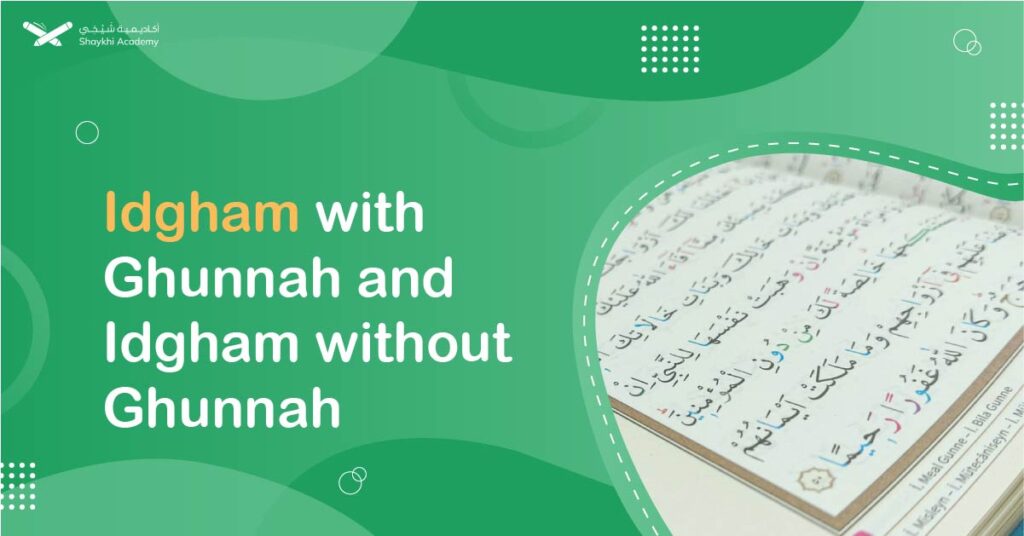
Idgham with Ghunnah involves merging a letter with a nasal sound, primarily using “ي” (ya), “ن” (noon), “م” (meem), and “و” (waw), adding a resonant quality to the recitation. In contrast, Idgham without Ghunnah merges letters without a nasal sound, using “ر” (ra) and “ل” (lam), ensuring a clear and distinct pronunciation without nasal resonance. […]
Idgham Shafawi With Types, Examples, And Pronunciation
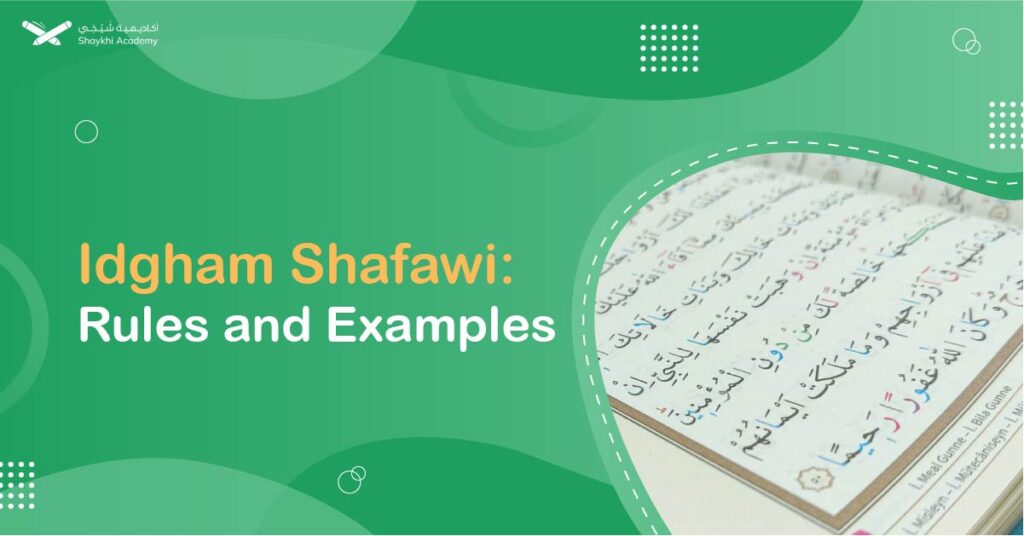
Idgham Shafawi, a key concept in Tajweed, involves the merging of two Meem letters, creating a seamless, prolonged sound. This rule, applied when a Meem Sakina (مْ) is followed by another Meem, enhances the clarity, beauty, and correctness of Quranic recitation. Mastering Idgham Shafawi ensures precise pronunciation and a deeper spiritual connection with the Qur’an. […]
